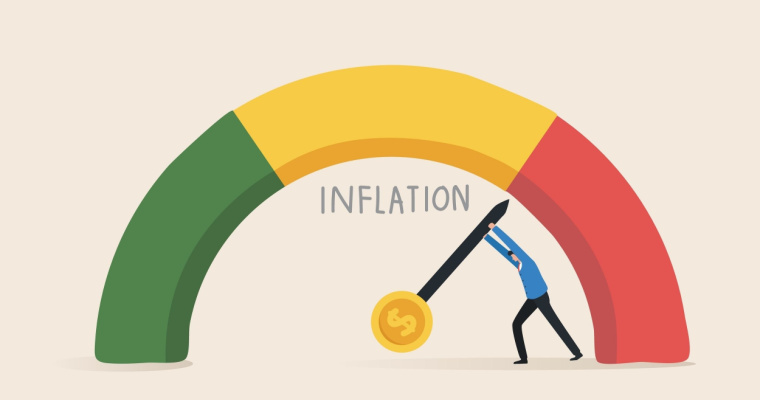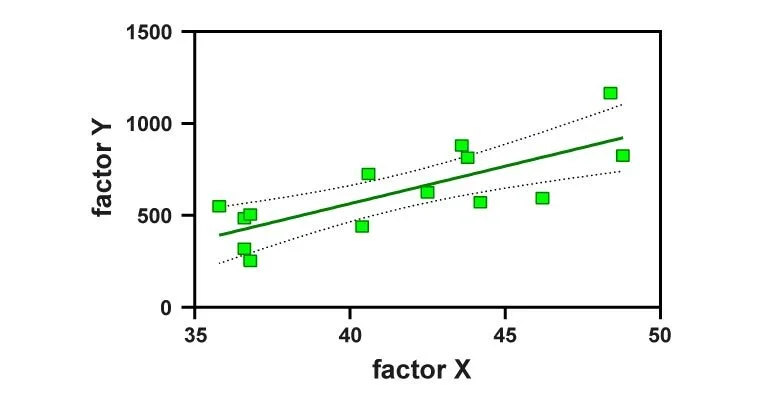How To Apply For Trademark Registration Online For Your Business?

Trademark is an intellectual asset and helps customers visually associate products and services with a particular brand or company. Trademark registration offers a business or proprietor the exclusive right to use and sell their registered goods and services. They can use a distinctive sign or label to categorise their products as their intellectual property. Another company or establishment using an identical mark for identical goods and services will be deemed as an infringement of intellectual rights.
Seven different trademarks are issued in India to manufacturers and service providers of specific goods and services. Read on to understand the concept of a trademark, its benefits and how to apply for trademark registration online.
What is Trademark Registration?
Differentiation of products and services in a competitive market environment is crucial. To facilitate such differentiation, a business owner can use logos, marks, names and symbols to distinguish them from its competitors. It assigns and adds value to the company and safeguards its brand name.
What can You Register As a Trademark?
Any product or service that requires differentiating itself from similar products to retain customers can adopt a trademark. Any packaging, pattern or certification, etc., can also be treated as a trademark.
The inclusions under trademark include:
- Product: Product marks are essential elements to differentiate products. This helps to avoid product duplicity and safeguard a product category.
- Service: Service marks distinguish services offered by an organisation and are applicable for intangible products.
- Shape: Trade dressing involves differentiating the shapes and sizes of certain products. This helps distinguish these products in addition to their logo and name.
- Pattern: Repetitions of similar designs meant for distinguishing products are common. Patterns are unique elements that can arise from known geometrical patterns.
- Collective: Sometimes, groups of people from an institution can also distinguish themselves. Firms, educational institutions or associations can apply for a collective trademark.
- Certification: Certification promises the fulfilment of particular standards.
- Sound: Sometimes, companies may introduce or launch products with unique jingles and tunes to attract customers.
- Colour: Colour combinations also help differentiate between products. Differentiating by colour and colour patterns helps customers associate better with a particular brand.
- Word: Companies often use specific words or phrases to distinguish their products or services. Unlike pictorial images, words are text-based logos unique to the companies using them.
- Numbers: Often, companies obtain trademarks with specific numbers. Numbers represent a specific service for a specific product line/class.
- Device: Any printed character or design that contains no words, letters, or numbers comes under this category.
- Packaging: Contents featured on the packaging, which includes names, slogans and graphics, also fall under trademarks. This enables companies to disassociate their products from their competition.
Why is Trademark Registration Important?
Trademark registrations aim to protect the status and individuality of brands. Not only does it prevent competitors from copying them, but it also makes them liable for prosecution. The Indian government stresses trademark licenses and requests companies to use them regularly.
Trademark registration provides a monopolistic association between products and their brands. This enhances brand recognition and reduces the spread of counterfeit items in the market. From an economic perspective, trademark registration prevents market failure.
Benefits of Trademark Registration
The competitive product or service market requires product differentiation to let individual brands sustain. Securing one’s intellectual rights is thus crucial, and through trademarks, the government ensures that no two companies share the same branding/packaging.
Some common benefits of choosing trademark registration for brands are:
- Exclusivity: Registered trademarks are exclusive, and the brand owning them has complete control over them. With absolute ownership of the trademark, brands can restrict others in the same class from copying. This helps to retain customer trust and loyalty.
- Product Differentiation: In a competitive market scenario, product differentiation helps companies retain their existence. Besides real differentiation, fancied product differentiation involves distinguishing products through branding and packaging. This assists in developing long-term customer retention and helps to scale the business.
- Developing an asset: Trademark registrations are assets from a company’s perspective. As intellectual property, companies can use trademarks as legal privileges and use them as intangible assets. They can, however, sell franchises or delegate rights of a trademark to other companies depending on their business interests.
- Preventing infringement: Any competing firms engaging in illegal usage of trademark licenses are liable for prosecution. Brands owing them can issue injunctions to prevent illegal usage and thus preserve their individuality.
- Cost-effective: Trademark licenses are cost-effective forms of creating a distinct image. They are easier to handle and maintain, and brands must pay protection and renewal fees after 10 years of the first enrolment.
How is Trademark Registration Done in India?
Trademark registration involves following certain steps:
Step 1: The first step to registering a trademark is researching. The applicant should look for potentially similar trademarks. It also helps save resources on trademark litigations.
Step 2: When applicants are satisfied with their trademark research, they can opt for registration. They should begin with filing a trademark application at the trademark registry department, also known as the Indian Patents Office. They can also perform this step online. An official receipt is immediately issued after the successful registration.
Step 3: An examiner overlooks the trademark application for discrepancies. After an examination spanning over 12-18 months, an application can be accepted completely, partially or rejected.
A trademark journal documents details of unconditional registrations. Unconditional registrations get a time period of 1 month to make necessary changes for acceptance. Rejected applications can raise hearings whereby the registrar decides whether they should continue with the application.
Step 4: Anyone objecting to a trademark registration can raise queries. Publication of the trademark registration allows a public display of the same, which proceeds forward if no oppositions arise. Any objections are subject to further hearings, and the registrar provides the final verdict.
Step 5: Applicants receive a registration certificate on successful application and publication approved by the registrar.
Step 6: All trademark registrations are valid for 10 years, after which they require further renewals.
Documents Required for Trademark Registration
Depending on the type of application and proprietorship, applicants need to send certain documents to validate their application. Following are the documents required for trademark registration for different types of organisations.
Individual and Sole Proprietorship: The trademark registration department allows individuals (Indian or foreign) to register their trademarks without additional legal requirements. The documents required for such trademarks include:
- A black and white copy of the logo or the specific word
- Signed copy of Form 48 that contains authorisation from the applicant to the Trademark Attorney
- The individual or proprietor’s identity proof
- Address proof of the individual
Partnership or Limited Liability Company: Small enterprises or startup businesses can apply for trademark applications by paying a registration fee. They need to submit the following documents for filing a registration:
- A copy of the logo
- Duly signed Form 48
- Udyog Aadhaar registration certificate
- Partnership deed
- Identity and address proof of signatory
Trademark Registration Fees
Normally, the trademark registration department charges Rs. 9000 per application per class. However, companies with MSME registrations can obtain such trademarks at Rs. 4500.
Trademark Opposition
Any trademark application can face opposition after the registrar has published the trademark application in the journal. Section 21 of the Trademark Act allows any individual to counter trademark applications. An opposition is succeeded by a conclusive statement stating the future of the application.
There are multiple grounds for raising trademark application opposition.
- Similarities with an existing or earlier trademark.
- The absence of a distinct character or if a trademark is too descriptive
- The application does not carry noble intentions
- Lack of distinctive characteristics
- Potential to create unnecessary confusion or deceive the public
- Unlawful or prohibited under the Emblem and Names Act, 1950
- Potential to promote disharmony and/or hurt religious or other sentiments.
The process of raising opposition to a trademark application involves the following steps:
- Filing an opposition notice with a Trademark Form 5 and payment of fees.
- The trademark registrar will issue notices to the applicant and expect a counter statement to deal with the opposition. Failure to produce one will lead to the abandonment of the application.
- The registrar sends notices to both parties providing a tentative date of hearing. The hearing decides whether the department will go forward with the application.
- Regarding the application and the opposition, the registrar takes the final decision. It checks the evidence in favour of the application and gives the final verdict. However, either of the parties can file petitions to the intellectual Appellate Board.
Trademark Objections
The initial stages of trademark application involve a trademark objection phase whereby an examiner objects to an application. Objections do not necessarily imply denials, but it seeks to understand the validation of the application.
Trademark objections can arise out of two conditions:
- If the trademark application form contains incorrect details related to the names of the applicants or other personal details, the registrars can issue objections. Also, incomplete or incorrect filing of Form 48 can attract objections.
- When the trademark applications lack distinctiveness and create a dilemma among consumers, they may get rejected. In this regard, identical trademarks, false specifications or the inclusion of offensive words may face objections and eventual rejections.
Final Word
Trademark registrations are intangible assets that safeguard and promote the essential essence of a brand. Individuals can apply to 45 different trademark classes depending on the nature of their organisations and product types. Trademark registration is a simple process but one that is crucial for a brand’s recognition.
FAQs on Trademark Registration
Ans: Owing to their usability and function, trademarks should contain words or phrases that are easier to pronounce and remember. They may include invented words, coined words or unique geometrical designs. Experts recommend avoiding geographical locations or common personal names for trademarks.
Ans: Trademark laws come from national statutes (Trade Marks Act, 1999), national bilateral conventions, court decisions, decisions on intellectual property, etc.
Ans: An applicant can remove his/her trademark applications to the registrar if they feel unused and do not adhere to the existing laws. Registrars can also issue a suo moto notice for such removals.
Ans: No, trademark applications are not mandatory. Trademark registrations are primary evidence of proprietorship. Infringement of unregistered trademarks, however, is not liable for prosecutions.
Ans: Trademark registration is a complex process that involves multiple stages. The completion of the process may take somewhere between 12 to 18 months after the successful submission of the documents.
Disclaimer
This article is solely for educational purposes. Navi doesn't take any responsibility for the information or claims made in the blog.

Customer’s Feedback
No comments found.What is Primary Deficit? – Example, Formula & Measures
What is a Primary Deficit? Primary Deficit is the difference between the current year’s fiscal... Read More »What is Financial Ratio Analysis? – Objectives, Types and Uses
Ratio analysis is a process that allows people to assess the financial health of a company. Using t... Read More »Treasury Management – Its Functions, Types and Benefits
Even the most well-funded business can run into huge losses if it does not have the resources to fu... Read More »How Anti Money Laundering Combats Financial Crime?
Anti Money Laundering (AML) is a system of rules, laws, regulations, and procedures that financial ... Read More »What is Salvage Value and Why is it Useful?
Salvage value, also called scrap value, is the value of a specific asset after its useful life. In ... Read More »Key Difference Between Factoring and Forfaiting in Trade Finance
Factoring and forfaiting have grown in prominence as major sources of export financing. For the uni... Read More »What is Factoring and its Importance in Financial Management?
Factoring is a practice in which a company buys the accounts receivable of another company at a dis... Read More »What is Budget Surplus: Its Effects, Advantages and Impact with Examples
When the revenue of a government, business, or individual exceeds its expenses in a given period, i... Read More »What is Balanced Budget – Components, Importance and Examples
In financial planning or the budgeting process, a balanced budget is one in which total anticipated... Read More »What Does Inflationary Gap Mean in Macroeconomics?
In macroeconomics, the difference between current and potential GDP is known as a gap. This gap is ... Read More »What is Accounting Conservatism in Finance and How Does it Work?
Accounting conservatism involves a conservative set of accounting guidelines wherein the worst-case... Read More »Multiple Linear Regression (MLP) – Uses, Formula and Examples
Various statistical models help in establishing a relationship between different variables. Multipl... Read More »Top 10 Chit Fund Schemes in India in 2023
Chit funds are one of the most popular return-generating saving schemes in India. It is a financial... Read More »10 Best Gold ETFs in India to Invest in April 2023
Gold ETFs or Gold Exchange Traded Funds are passively managed funds that track the price of physica... Read More »10 Best Demat Accounts in India for Beginners in 2023
Creation of Demat accounts revolutionised the way trades were conducted at the stock exchanges. It... Read More »20 Best Index Funds to Invest in India in April 2023
What is an Index Fund? An index fund is a type of mutual fund or exchange-traded fund (ETF) that... Read More »Best Arbitrage Mutual Funds to Invest in India in April 2023
Arbitrage funds are hybrid mutual fund schemes that aim to make low-risk profits by buying and sell... Read More »10 Best SIP Plans in India to Invest in April 2023
What is SIP? SIP or Systematic Investment Plan is a method of investing a fixed amount in ... Read More »10 Best Corporate Bond Funds in India to Invest in April 2023
Corporate bond funds are debt funds that invest at least 80% of the investment corpus in companies ... Read More »10 Best Bank for Savings Account in India [Highest Interest Rate 2023]
Savings account is a type of financial instrument offered by several banks. It lets you safely depo... Read More »






























